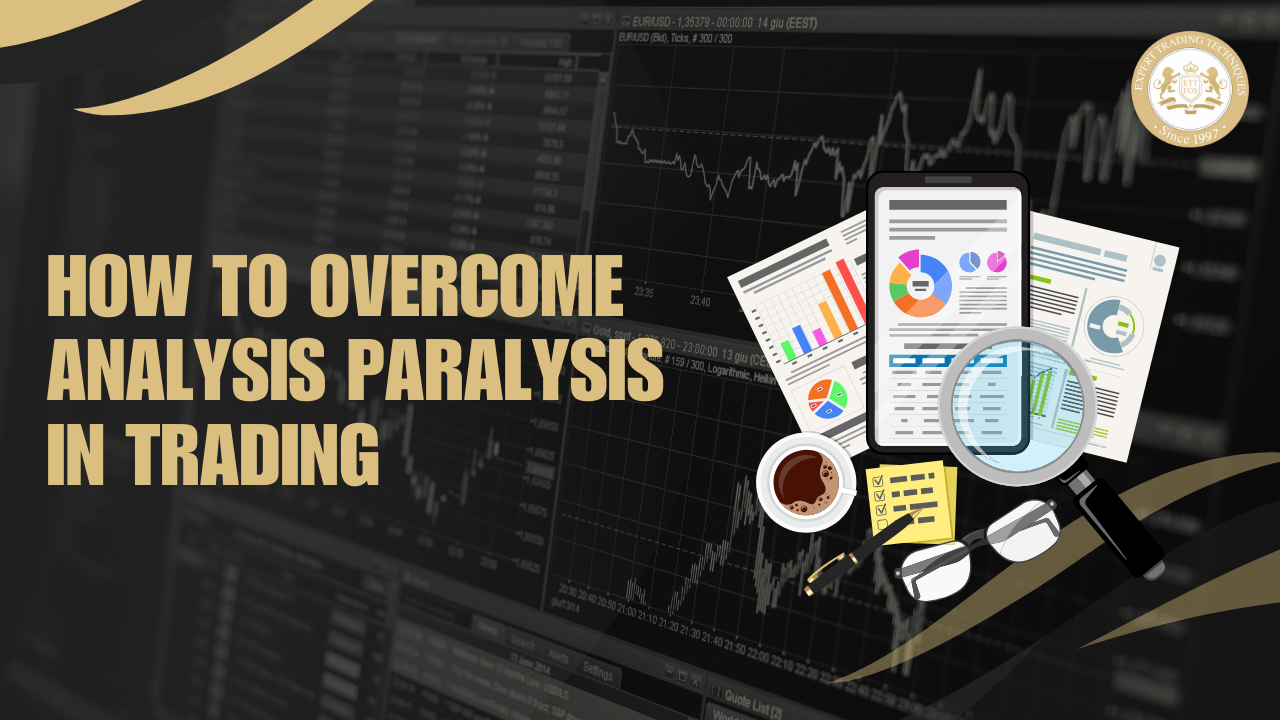
In this blog, we will explore the concept of analysis paralysis in trading, its causes, and most importantly, how to overcome it. Analysis paralysis is a common challenge faced by traders, where the abundance of information and options leads to indecision and inaction. We will discuss the importance of addressing and overcoming analysis paralysis for successful trading, along with practical strategies that traders can implement to make more confident and informed decisions in the market.
Analysis paralysis is a psychological state in which an individual becomes so overwhelmed by available options or information that they are unable to make a decision or take action. In trading, this often manifests as a trader being unable to execute trades or constantly second-guessing their decisions.
Let’s explore how you can avoid or overcome analysis paralysis.-
To overcome analysis paralysis, traders should develop and adhere to a structured trading plan. A trading plan outlines specific rules and criteria for entering and exiting trades, managing risk, and achieving trading goals. By following a trading plan, traders can avoid impulsive decisions driven by emotions or market noise, leading to more disciplined and consistent trading.
For example, a trader may have a rule in their trading plan to only enter a trade when two or more technical indicators align, and to exit the trade if it reaches a predetermined profit target or stop-loss level. By sticking to this plan, the trader can avoid the indecision that often comes with overanalyzing market information and make more confident trading decisions based on a predefined strategy.
To overcome analysis paralysis, it’s important to set clear criteria for trades. By defining specific rules for when to enter and exit trades, you make the decision-making process much simpler. For example, you might decide to buy a stock when its price crosses above the 50-day moving average and sell it when it gains 10%. This approach removes the guesswork and helps you stick to your strategy, reducing the anxiety and indecision that can come from overanalyzing every trade.
Practicing with a demo account is a great way to overcome analysis paralysis. It allows you to trade in a risk-free environment using virtual money. This helps build confidence and refine your strategies without the stress of losing real money.
For instance, you can test your trading plan, adjust your entry and exit points, and see how different market conditions affect your trades.
By practicing regularly, you become more comfortable with your decisions and reduce the hesitation that often comes with trading real money. This step-by-step approach makes it easier to transition to live trading with a tested and proven plan.
One last tip we will give you: continuously educate yourself. Keep backtesting and improving your trading strategy or plan. Try to gain insights from your trading journey by identifying the mistakes you are making. If you don’t have one, create a trading journal and track every single trade. This will help you refine your approach and become a more confident and effective trader.
If you’re serious about mastering trading, consider joining the ETFOs trading masterclass. With over 20 years of experience, we’ve developed backtested systems that give you an edge in the market. Our comprehensive course covers everything from the basics to advanced trading techniques, ensuring you’re well-prepared for real-world trading. Join us to learn from seasoned experts and take your trading skills to the next level.
In conclusion, we’ve explored strategies to overcome analysis paralysis in trading. By developing a structured trading plan, setting clear criteria for trades, practicing with a demo account, simplifying your trading strategy, and seeking continuous education and support, you can effectively navigate through indecision and information overload. Implementing these strategies will not only help you make more confident trading decisions but also foster a balanced and decisive approach to trading. Remember, consistency and discipline are key to success in the dynamic world of trading.
What is analysis paralysis in trading?
Analysis paralysis in trading refers to the state where traders overanalyze information or hesitate to make decisions, often due to fear of making mistakes or missing out on opportunities.
How does having a trading plan help overcome analysis paralysis?
A trading plan provides clear guidelines for entering and exiting trades, managing risks, and achieving goals, reducing indecision and uncertainty in trading decisions.
How can traders set clear criteria for trades to avoid analysis paralysis?
Traders can define specific entry and exit criteria, use checklists, and establish predetermined rules to streamline decision-making and mitigate the effects of overanalysis.